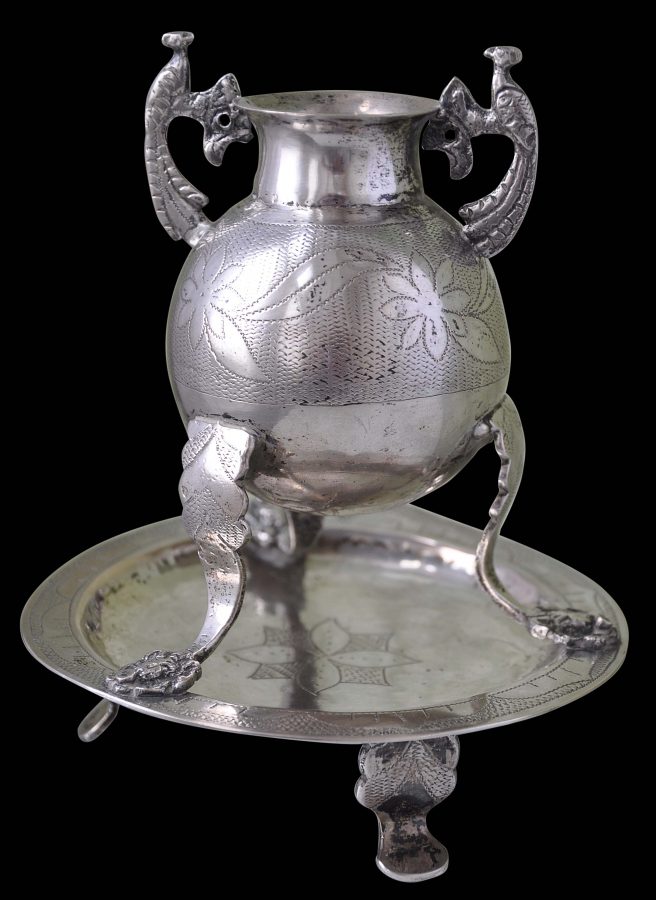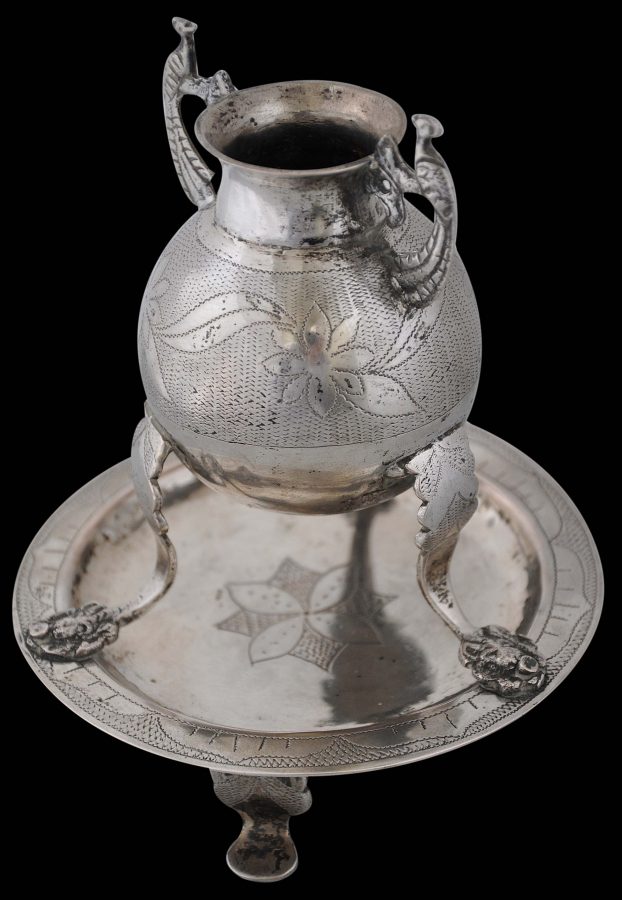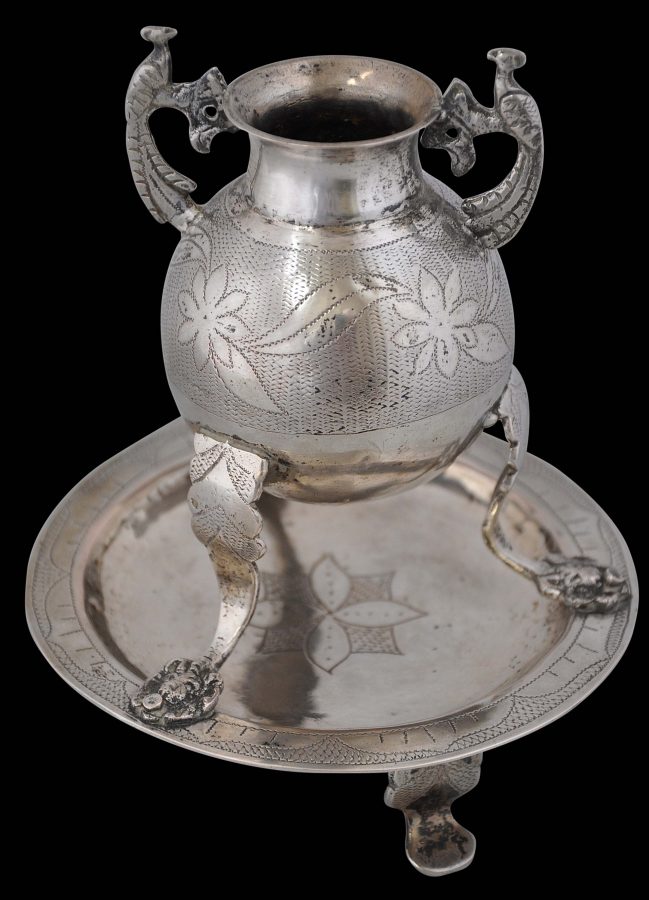Enquiry about object: 1679
Spanish Colonial Silver Mate Cup & Stand
Bolivia late 18th century
height: 16cm, weight: 287g
Provenance
European private collection
This mate cup, of solid silver, is in the form of a gourd. Of spherical form, it has three flared feet that stand on a saucer engraved with a petal motif along the rim and a star or flower motif directly beneath the cup. The cup is engraved similarly with flower and leaf patterns. Handles in the shape of birds are on either side of the cup. The saucer itself stands on three engraved feet.
Yerba mate is an important beverage that is indigenous to South America. Like tea or coffee, it contains a mild stimulant. A variety of utensils are used in its preparation and consumption. Wealthier households commissioned silver mate utensils. Yerba or hierba is a species of holly that is native to subtropical South America: northern Argentina, Paraguay, Uruguay, southern Brazil and Bolivia. The leaves are used to make the herbal tea drunk from cups such as this. The leaves are steeped in hot water rather than boiled and sometimes sugar is added.
The term ‘hierba’ is Spanish for grass or herb. ‘Yerba’ is a variant spelling more common in Argentina, Uruguay and Mexico. ‘Mate’ is from the Quechua language and means ‘cup’. So yerba mate literally is a ‘herb cup’.
Latin America/Latin American
References
Argent d’Argentine, Association Francaise d’Action Artistique, 1992.
Luis Ribera, A., & H.H. Schenone, Plateria Sudamericana de los Siglos XVII-XX, Hirmer Verlag Muchen, 1981.
Taullard, A., Plateria Sudemericana, Ediciones Espeula de Plata, 2004.




